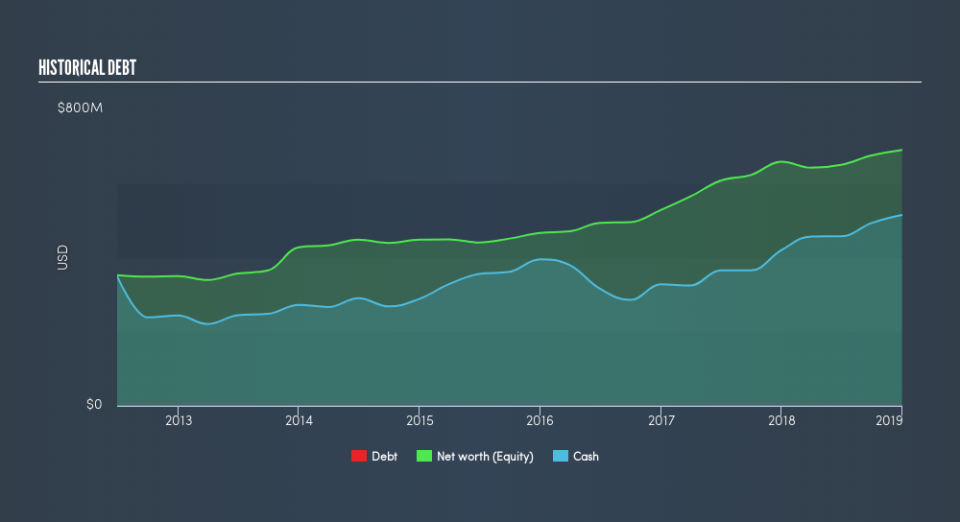Has Universal Display Corporation (NASDAQ:OLED) Got Enough Cash?

Stocks with market capitalization between $2B and $10B, such as Universal Display Corporation (NASDAQ:OLED) with a size of US$8.1b, do not attract as much attention from the investing community as do the small-caps and large-caps. While they are less talked about as an investment category, mid-cap risk-adjusted returns have generally been better than more commonly focused stocks that fall into the small- or large-cap categories. Today we will look at OLED’s financial liquidity and debt levels, which are strong indicators for whether the company can weather economic downturns or fund strategic acquisitions for future growth. Remember this is a very top-level look that focuses exclusively on financial health, so I recommend a deeper analysis into OLED here.
Check out our latest analysis for Universal Display
Can OLED service its debt comfortably?
A debt-to-equity ratio threshold varies depending on what industry the company operates, since some requires more debt financing than others. As a rule of thumb, a financially healthy mid-cap should have a ratio less than 40%. For Universal Display, investors should not worry about its debt levels because the company has none! This means it has been running its business utilising funding from only its equity capital, which is rather impressive. Investors' risk associated with debt is virtually non-existent with OLED, and the company has plenty of headroom and ability to raise debt should it need to in the future.
Can OLED pay its short-term liabilities?
Since Universal Display doesn’t have any debt on its balance sheet, it doesn’t have any solvency issues, which is a term used to describe the company’s ability to meet its long-term obligations. But another important aspect of financial health is liquidity: the company’s ability to meet short-term obligations, including payments to suppliers and employees. With current liabilities at US$133m, the company has maintained a safe level of current assets to meet its obligations, with the current ratio last standing at 4.77x. The current ratio is calculated by dividing current assets by current liabilities. Having said that, many consider a ratio above 3x to be high, although this is not necessarily a bad thing.
Next Steps:
OLED has no debt in addition to ample cash to cover its short-term liabilities. Its safe operations reduces risk for the company and shareholders, though, some level of debt may also boost earnings growth and operational efficiency. This is only a rough assessment of financial health, and I'm sure OLED has company-specific issues impacting its capital structure decisions. I suggest you continue to research Universal Display to get a better picture of the stock by looking at:
Future Outlook: What are well-informed industry analysts predicting for OLED’s future growth? Take a look at our free research report of analyst consensus for OLED’s outlook.
Valuation: What is OLED worth today? Is the stock undervalued, even when its growth outlook is factored into its intrinsic value? The intrinsic value infographic in our free research report helps visualize whether OLED is currently mispriced by the market.
Other High-Performing Stocks: Are there other stocks that provide better prospects with proven track records? Explore our free list of these great stocks here.
We aim to bring you long-term focused research analysis driven by fundamental data. Note that our analysis may not factor in the latest price-sensitive company announcements or qualitative material.
If you spot an error that warrants correction, please contact the editor at editorial-team@simplywallst.com. This article by Simply Wall St is general in nature. It does not constitute a recommendation to buy or sell any stock, and does not take account of your objectives, or your financial situation. Simply Wall St has no position in the stocks mentioned. Thank you for reading.

 Yahoo Finance
Yahoo Finance 
